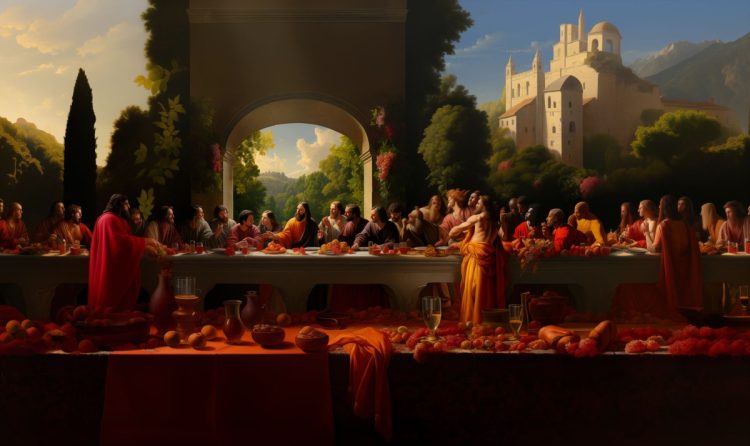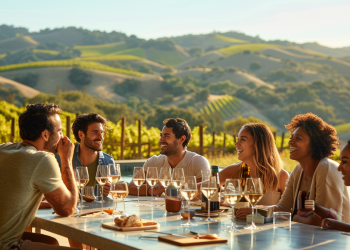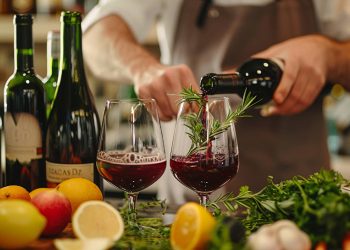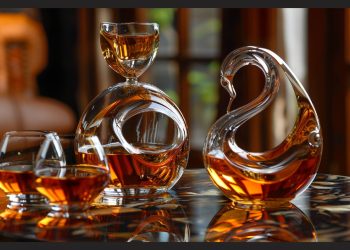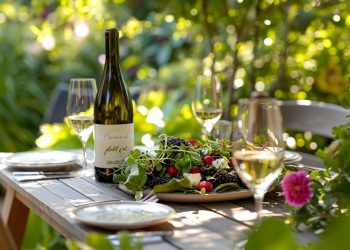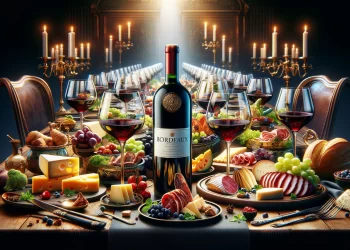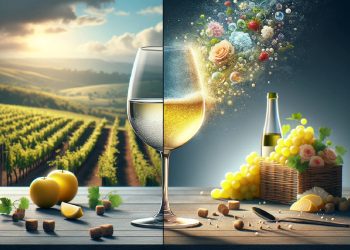Welcome, wayfarers of the web, to a peculiar exploration where wine, that ancient elixir, transcends its grape-born boundaries about wine as a metaphor. Here, in the digital vineyard of thought, we quaff deep from the chalice of history, art, and philosophy. We delve into a world where art, theology, philosophy, and the essence of wine converge in a exploring dance.
Ah, wine! For centuries, this intoxicating elixir has been woven seamlessly into the cultural, religious, and artistic tapestry of civilizations worldwide. But beyond its gustatory delights, wine serves a more profound purpose – it’s a potent metaphor, a symbol, a divine conduit. This piece delves into the symbiotic relationship between wine and one of the most iconic religious paintings – “The Last Supper” by Leonardo da Vinci.
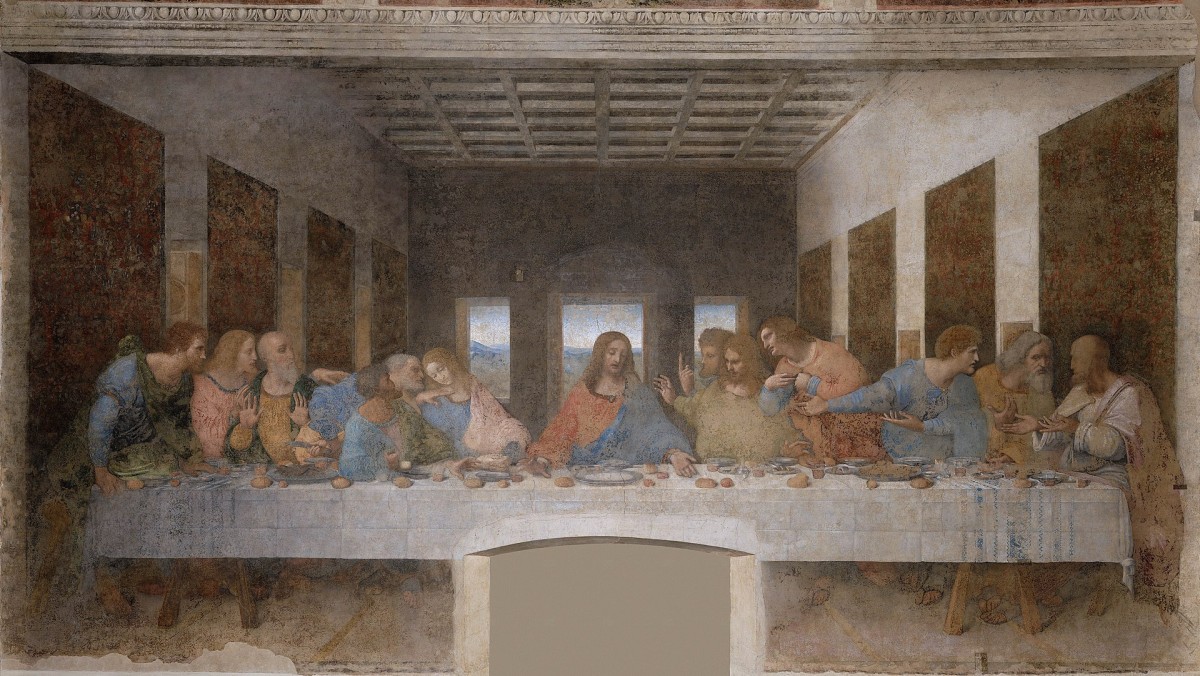
Year c. 1495–1498
Type Tempera on gesso, pitch, and mastic
Movement: High Renaissance
Dimensions: 460 cm × 880 cm (181 in × 346 in)
Location: Santa Maria delle Grazie, Milan
Website: https://cenacolovinciano.org/en/
Diving into the labyrinthine depths of Da Vinci‘s “The Last Supper,” we encounter wine not just as a mere liquid but as a narrative’s pulsating artery, a symbol resonating with echoes of betrayal, divinity, and the human spirit’s fragility. Nietzsche, in his profound musings, declared, “Wine makes the life of the gods bearable to men,” a sentiment that captures the essence of wine in this masterpiece. Here, wine is more than a physical entity; it’s a metaphysical bridge, a conduit that links the mortal to the divine, the earthly to the celestial.
Historical and Cultural Significance of Wine
Wine has been an integral part of religious ceremonies and communal gatherings since time immemorial. It has been extolled in scriptures, sermons, and songs for its ability to unite people and elevate spirits. The Dionysian Odyssey tells tales of wine as a divine gift, a means of communing with gods, and a symbol of life’s cyclical nature. But where does this narrative weave itself into the tapestry of art?
“The Last Supper” and Wine
“The Last Supper” masterfully portrays the poignant moment before Jesus Christ’s betrayal. Amidst the disciples’ shock and dismay, the wine jug stands subtly yet resolutely, a silent testament to the imminent sacrifice. In this context, wine is more than just a beverage; it’s a symbolic paradigm shift. It transforms from a mere earthly pleasure to a divine conduit, signifying the blood of Christ, the promise of salvation.
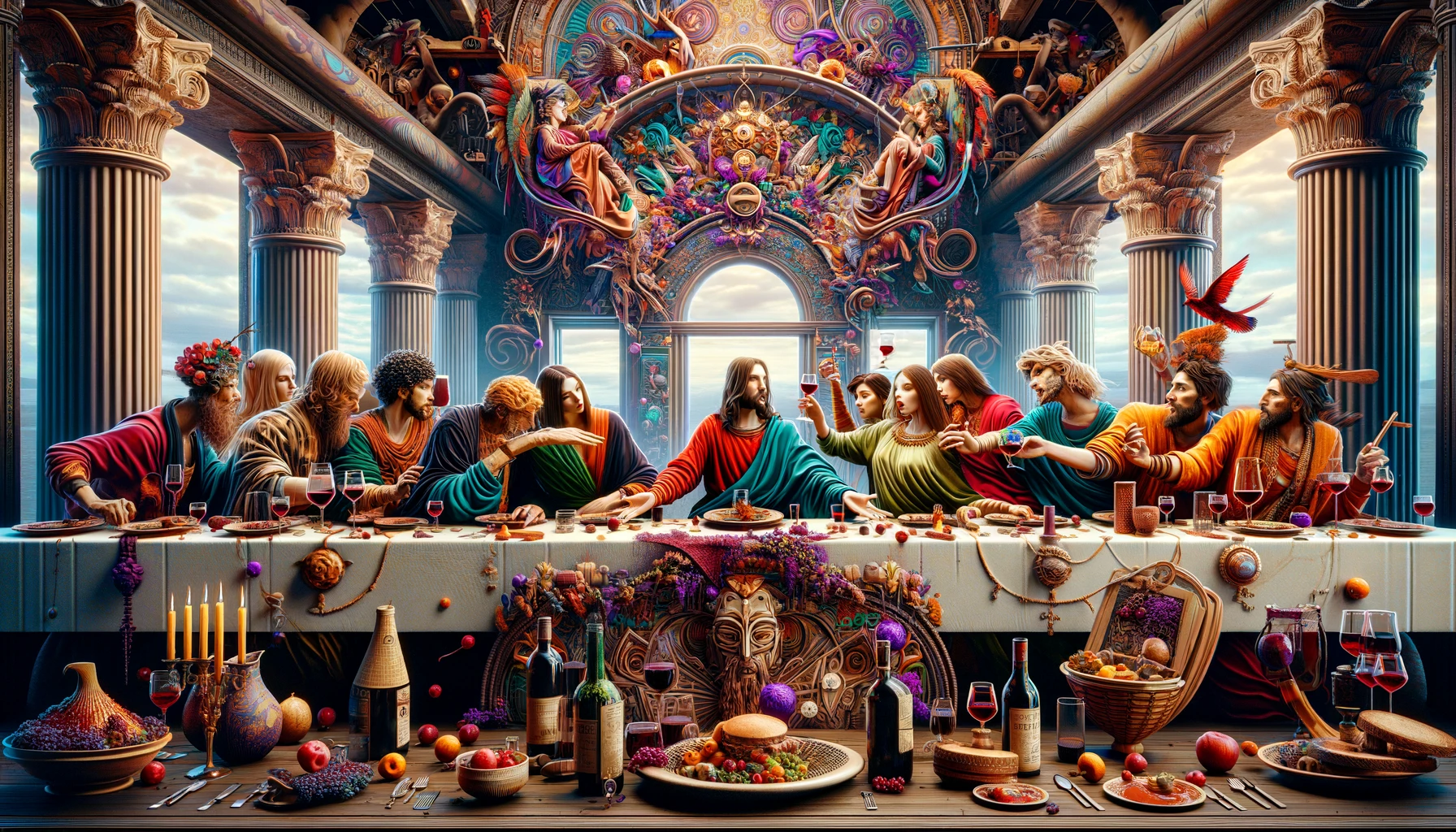
Artist: Umut Taydaş via DALL-E 3
Date: 06.12.2023
Type: AI Prompted Generative Artwork
Movement: Super High Renaissance
Dimensions: 1792 x 1024 px
Location: https://files.oaiusercontent.com/file-O2fi14ARKwSAGOdW3Jyt6SoO?se=2023-12-05T22%3A16%3A42Z&sp=r&sv=2021-08-06&sr=b&rscc=max-age%3D31536000%2C%20immutable&rscd=attachment%3B%20filename%3Dbb7f31f5-c768-44d3-a3c5-b8e39a736072.webp&sig=AiLIG6uK%2BC1BQkFM/Ie24cwx0C9abHnnxmWK4USkVV0%3D
Wine: A Bloodline of Betrayal and Divinity
Let’s embark on a Dionysian odyssey, where wine isn’t just a drink but a narrative’s lifeblood, a metaphysical bridge between the mortal coil and celestial realms.
Diving headfirst into the chaotic beauty of Da Vinci’s masterpiece, we see wine not merely as a beverage but as the lifeblood of a profound narrative. This is no ordinary drink; it’s a symbol thick with the connotations of blood, sacrifice, and an eternal covenant. Wine transcends its physical form, embodying betrayal, divinity, and the frailty of the human spirit.
In the tapestry of religious narratives, wine often flows as a symbol of paradox – a bearer of truth and a whisperer of secrets. In the Quran, wine appears as a forbidden fruit, a symbol of earthly temptation contrasted against Paradise’s pure, unfermented rivers (Source: Quran). The Torah, too, speaks of wine, sometimes as a symbol of abundance and blessing, other times as a harbinger of downfall and moral decay (Source: Jewish Encyclopedia).
Multiplicity in a Goblet
Consider the wine in “The Last Supper,” a character in its own right, a shape-shifter playing multiple roles. It’s a tangible object, a goblet of red; it’s a symbol, the blood of Christ; and it’s a narrative pivot around which the story unfurls. Plato aptly stated, “No thing more excellent nor more valuable than wine was ever granted mankind by God.” In this scene, every interpretation of wine adds a different shade to the story, from the literal to the metaphorical.
Behold Da Vinci’s “The Last Supper,” where wine is no mere background actor. This isn’t just fermented grape juice; it’s a character, shape-shifting through the annals of time. In this scene, the goblet of red is a tangible object, the blood of Christ, and a narrative pivot, a trifecta of symbolism that Plato might have toasted to as “more excellent than any other boon granted by gods to man.”
Da Vinci’s goblet of wine in “The Last Supper” is a vessel of multiplicity, embodying layers of meaning. It’s a symbol steeped in the Dionysian spirit of Greek mythology, where wine is both a gift and a curse from the gods, a source of ecstasy and madness (Source: Greek Mythology).
A Tapestry of Religious Narratives
In the labyrinth of religious narratives, wine flows paradoxically. The Quran labels it a forbidden fruit, a contrast to Paradise’s pure nectar, while the Torah oscillates between seeing it as a symbol of abundance and an omen of moral decay. Such multiplicity!
For enthusiasts keen on further exploring wine’s narrative and symbolic dimensions in art and history, I cordially invite you to peruse ‘The Rich Symbolism of Wine in Renaissance Art’ on Encyclopedia Wines.
Asignifying Rupture: Wine as a Symbolic Paradigm Shift
Da Vinci’s portrayal of wine is a masterstroke of asignifying rupture. It’s a symbolic leap from the Old Testament’s sacrificial lamb to the New Testament’s emblem of Christ’s blood, marking a transformative shift in religious symbolism. This is not just a change of narrative gears; , wine symbolizes a seismic shift in religious symbolism, it’s a quantum leap in the realm of religious iconography. (Source: Biblical Studies).
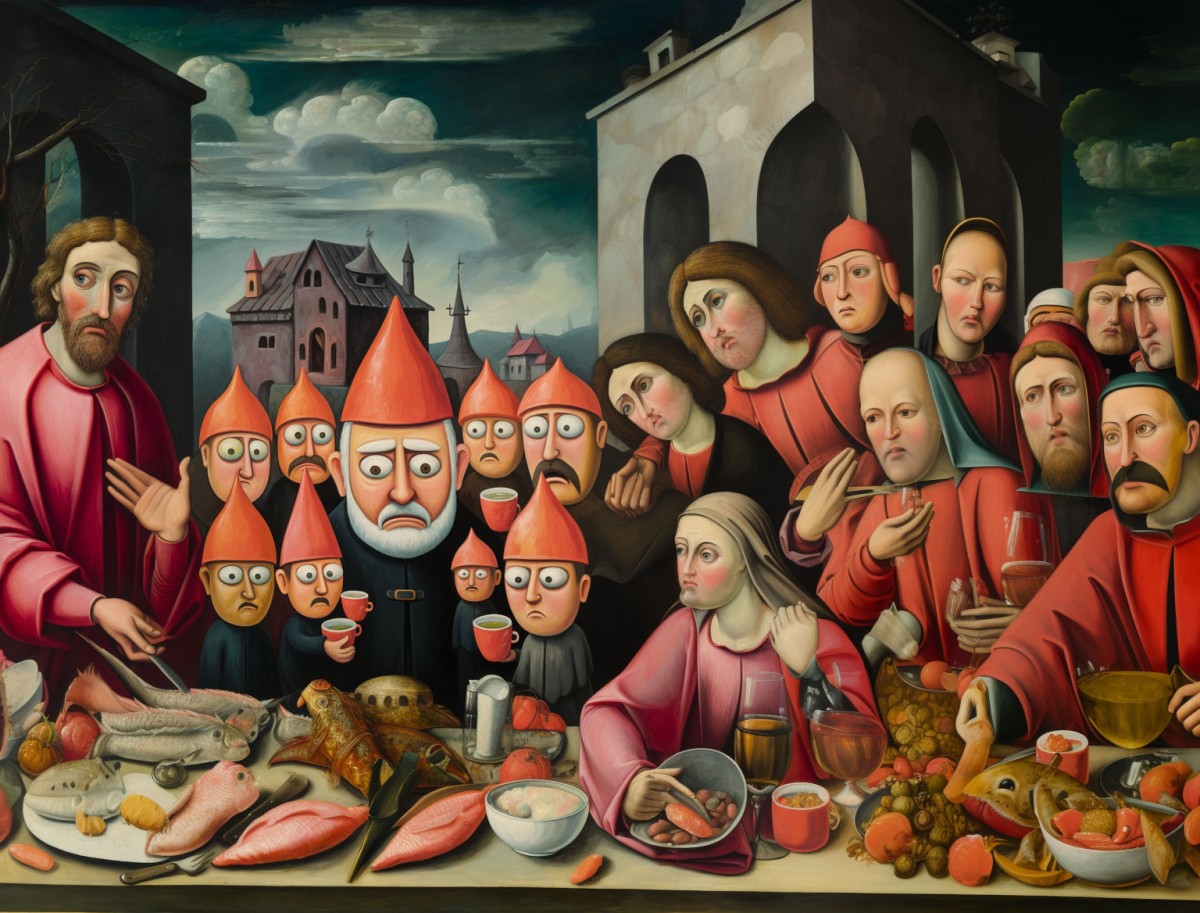
Artist: @cyrano via Midjourney 5
Date: 06.12.2023
Type: AI Prompted Generative Artwork
Movement: Super High Renaissance –chaos 76 –iw 2 –s 250
Captured with: Canon EOS 5D Mark IV.
Dimensions: 1536 x 1168 px
Location: https://cdn.midjourney.com/98c0c00d-f776-47f3-a648-56239dc855b6/0_0.webp
As the disciples imbibe the wine, they partake in a transformative communion, marking a shift in religious narratives. Wine, in this setting, is more than a drink; it’s a catalyst for change, a harbinger of a new covenant. This asignifying rupture is not just a theological concept but a recurring motif in art, particularly in works like “The Last Supper,” where wine becomes a symbol of divine love and sacrifice.
Decalcomania of Divinity: Mapping Art and Theology
“The Last Supper” is more than a mere painting; it’s a cartographic masterpiece of religious and artistic thought. Wine, in this tableau, becomes a decalcomania, reflecting divinity and humanity intertwined, echoing through Greek libations to Christian communion. Da Vinci doesn’t just paint a biblical scene; he reinterprets it, weaving a rich tapestry of meaning and symbolism, particularly through the portrayal of wine.
In this artistic and theological map, wine serves as a decalcomania, a reflection of divinity and humanity intertwined. It’s a symbol that resonates across different religions, from the libations of ancient Greek rituals to the sanctified wine of Christian communion (Source: Religious Studies).
In Da Vinci’s work, wine is a celestial metaphor, a nexus between divine and mortal realms. It transcends physicality, embodying spiritual truths and existential dilemmas, akin to the philosophical musings of Socrates and Nietzsche on truth and morality.

Artist: @cyrano via Midjourney 5
Date: 06.12.2023
Type: AI Prompted Generative Artwork
Movement: Super High Renaissance –chaos 76 –iw 2 –s 250
Captured with: Canon EOS 5D Mark IV.
Dimensions: 1024 x 1024 px
Location: https://cdn.midjourney.com/bf25ca9b-4ba5-4adc-907f-23caa0503225/0_1.webp
Celestial Metaphor: Wine as the Divine Conduit
In this tableau, wine isn’t just part of the scenery; it’s a celestial metaphor, a divine conduit, a nexus between the divine and the mortal realms. It’s a symbol that transcends the physical, embodying spiritual truths and existential dilemmas, much like the philosophical musings of Socrates’ unending quest for truthand Nietzsche on the nature of truth and morality (Source: Philosophy). and Foucault’s intricate dance of power and knowledge within religious narratives.
In the annals of religious literature and art, wine often takes on celestial symbolism, essentially bridging the gap between the mortal and the divine. It’s this spiritual connection that “The Last Supper” captures so beautifully. The wine, in its quiet presence, communicates profound truths about faith, sacrifice, and communion. As Benjamin Franklin rightly said, “Wine is constant proof that God loves us and loves to see us happy.”
Wine as a metaphor: Seven facets of vinous intrigue in “The Last Supper”
The depiction of wine in “The Last Supper” is layered with complexities, each facet holding its unique intrigue. From the manner of pouring to the positioning of the jug, each detail is a piece of the puzzle. The seven facets – tranquility, unity, sacrifice, betrayal, prophecy, transformation, and redemption – create a metaphorical symphony that resonates with the painting’s deeper theological undercurrents.
- Symbol of New Covenant: The wine, akin to Christ’s blood, forges a new divine-human pact.
- Artistic Spotlight: Da Vinci’s focus on the goblet underlines its narrative weight.
- Cultural Resonance: The wine reflects the rich tapestry of its religious and cultural significance.
- Emotional Depths: It adds a layer of emotional complexity, stirring the soul.
- Interpretative Layers: From the literal to the allegorical, the wine invites myriad readings.
- Theological Discourse: Its depiction has sparked endless theological debates.
- Artistic Revolution: Da Vinci’s treatment of the wine is a testament to his innovative genius.
“The Last Supper”: A masterful art piece about wine and other things
In the grand cosmic play where divinity and humanity dance, wine emerges as a paradoxical protagonist, a Dionysian agent blurring the lines between order and chaos, sacred and mundane. Each draught from this chalice of tales unveils a tapestry of meanings, a bacchanalian rhapsody at the crossroads of art, theology, and philosophy.
“The Last Supper,” Da Vinci’s timeless tableau, serves as a masterful testament to wine’s enthralling dance with symbolism. Here, wine is not merely a fermented concoction but a metaphorical kaleidoscope, mirroring the intricacies of human existence, the whispers of divine promises, and the silent hymns of spiritual communion. As we partake in this celestial potion, let’s raise a glass to its storied past, its symbolic prowess, and its unyielding presence in the realms of our artistic and sacred lore. Here’s to the wine – a metaphor resplendent, a symbol profound, a conduit to the divine!
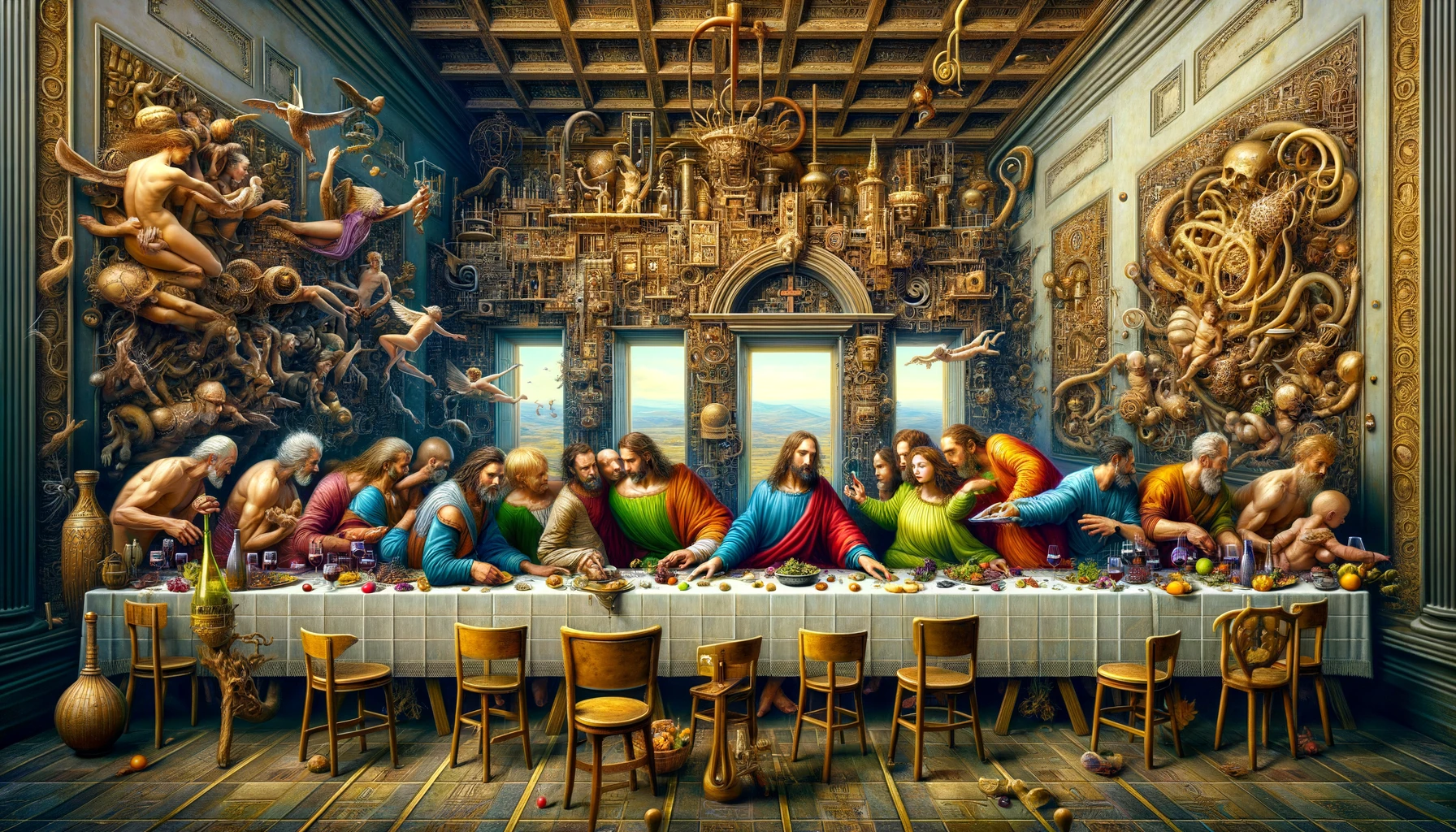
Artist: Merasturda Enkeste via DALL-E 3
Date: 06.12.2023
Type: AI Prompted Generative Artwork
Movement: Super High Renaissance –chaos 76 –iw 2 –s 250
Captured with: Canon EOS 5D Mark IV.
Dimensions: 1792 x 1024 px
Location: https://files.oaiusercontent.com/file-0NjCTkbNviqkNTy2nJhNHN9y?se=2023-12-05T22%3A47%3A52Z&sp=r&sv=2021-08-06&sr=b&rscc=max-age%3D31536000%2C%20immutable&rscd=attachment%3B%20filename%3Def96ca1d-b89f-46c0-8acb-4df339dae12b.webp&sig=%2BOzhbn8fUGw/J9Zl18thSj0NcUl6080Q%2Bwtte5q8CT4%3D
Da Vinci’s magnum opus stands as a vibrant chronicle of the intimate waltz between art, faith, and the allegorical essence of wine. This isn’t merely a saga of religious iconography; it’s a confluence of diverging philosophical and theological streams, a rich exploration of metaphor and meaning. Broadening our gaze, we see wine’s hallowed position across diverse religions and beliefs. Within the vibrant strokes and hues of “The Last Supper,” lies a narrative canvas that transcends the bounds of time and space, beckoning us to muse, reflect, and perhaps glean a deeper understanding of the divine, the human, and the mystical wine that meanders between them.
So, my friends, as we traverse these digital pages, let us raise our glasses to the authors, sommeliers, vintners, and storytellers. In their words, we find the essence of wine – a confluence of art, science, and passion. Be enthralled by the depths of knowledge.
Cheers to the stories yet to be told, and the lessons yet to be learned.
For more on the mesmerizing world of wine, delve into “Encyclopedia Wines: Compendium of Wine Sagas” and let your curiosity be your guide.
Sources:
- Nietzsche, Friedrich. “Thus Spoke Zarathustra.” Link
- “Leonardo da Vinci’s The Last Supper.” Wikipedia
- “Wine in Religious Communities of the Middle East.” Wikipedia
- “Wine Quotes.” Southern Living
- “Wine Quotes.” Goodreads
- “A Collection of the Best Wine Quotes of All Time.” The Wine Cellar Group
- “Rhizome (philosophy).” Wikipedia
- “Arborescent.” Wikipedia
- “Internet Encyclopedia of Philosophy.” IEP
- “Stanford Encyclopedia of Philosophy.” Stanford
- “Oxford Reference – Philosophy.” Oxford Reference

